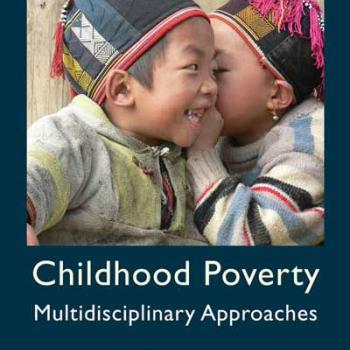Publication Information

This chapter uses Young Lives data from Peru,Ethiopia,Vietnam, and the state of Andhra Pradesh in India to illustrate the multidimensional nature of child poverty. The chapter focuses on the data and analysis of Rounds 1 and especially 2 in 2002 and 2006. The chapter introduces the data and presents descriptive analysis of some key dimensions of poverty. It also discusses multidimensional poverty indexes and illustrates the possibilities offered by the Young Lives data. The chapter also discusses some of the limitations of this approach and various ways in which causes and consequences of poverty can be researched using longitudinal data such as those collected by Young Lives, which allow us to investigate some of the dynamic processes of child poverty. The nature of such data has limitations but also important advantages. It is not intervention-based or experimental, so causal inference using statistical tools is at times problematic. Nevertheless, the chapter will argue that by using careful non-experimental statistical methods, we can offer substantive new insights into child poverty and its causes and consequences. The chapter uses some examples from recent work using the Young Lives data to illustrate this potential.
Reference:
Dercon, Stefan (2012) ' Understanding Child Poverty in Developing Countries: Measurement and Analysis', in Jo Boyden and Michael Bourdillon (eds.) Childhood Poverty. Multidisciplinary Approaches (pp. 52-69). Basingstoke: Palgrave Macmilllan.

This chapter uses Young Lives data from Peru,Ethiopia,Vietnam, and the state of Andhra Pradesh in India to illustrate the multidimensional nature of child poverty. The chapter focuses on the data and analysis of Rounds 1 and especially 2 in 2002 and 2006. The chapter introduces the data and presents descriptive analysis of some key dimensions of poverty. It also discusses multidimensional poverty indexes and illustrates the possibilities offered by the Young Lives data. The chapter also discusses some of the limitations of this approach and various ways in which causes and consequences of poverty can be researched using longitudinal data such as those collected by Young Lives, which allow us to investigate some of the dynamic processes of child poverty. The nature of such data has limitations but also important advantages. It is not intervention-based or experimental, so causal inference using statistical tools is at times problematic. Nevertheless, the chapter will argue that by using careful non-experimental statistical methods, we can offer substantive new insights into child poverty and its causes and consequences. The chapter uses some examples from recent work using the Young Lives data to illustrate this potential.
Reference:
Dercon, Stefan (2012) ' Understanding Child Poverty in Developing Countries: Measurement and Analysis', in Jo Boyden and Michael Bourdillon (eds.) Childhood Poverty. Multidisciplinary Approaches (pp. 52-69). Basingstoke: Palgrave Macmilllan.

